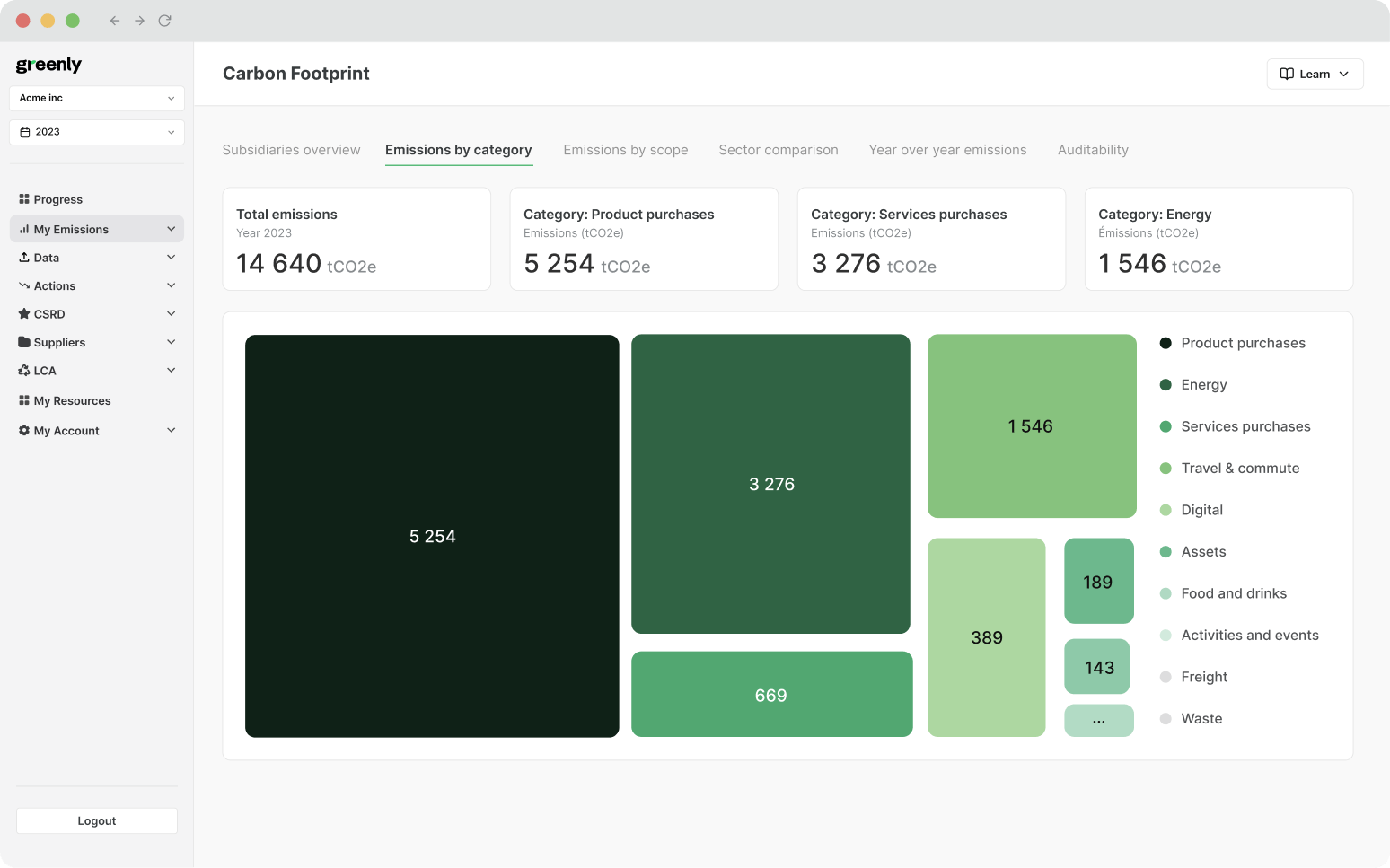ESG / CSR
Industries
Water Waste in the US: What are the Figures?
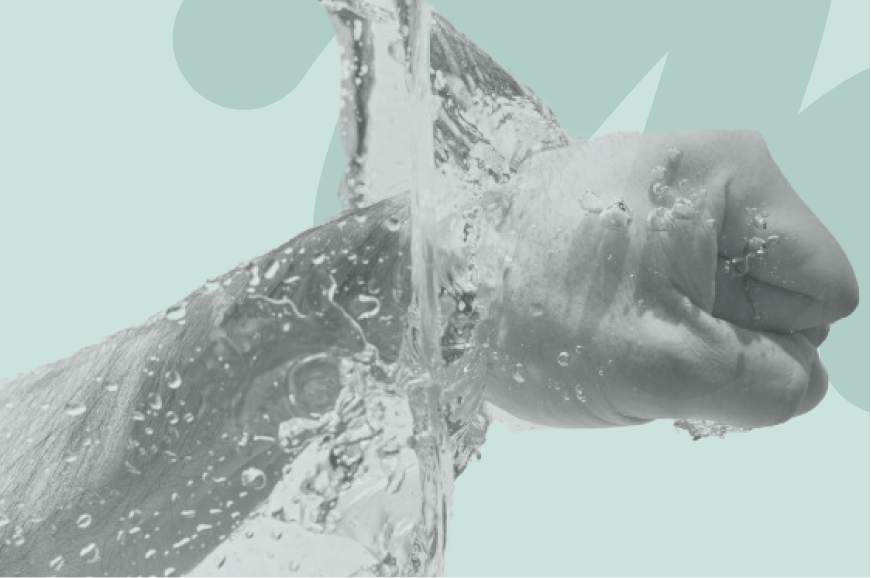


- Definition of water waste
- Breakdown of US water waste figures and why Americans contribute to high water usage
- Mechanisms for Americans to avoid water waste and reduce water usage
We all know that the U.S. likes to consume things on a larger scale than most countries do, such as through mass production, throwing away large amounts of food, and even contributing to water waste.
Exactly how much water is being wasted by the average American in the U.S.? In this article, we’ll discuss the figures on water waste in the U.S. and how those figures could be reduced through efforts made by Americans to reduce water waste and consumption.
What is Water Waste?
Water waste, also known as wastewater, refers to the amount of water that is wasted from daily activities that require the use of water: such as by showering, brushing teeth, making coffee, running the dishwasher, flushing the toilet, watering the lawn, or doing a load of laundry.
In addition to daily household chores that require the use of water, water waste can also come from industrial efforts and commercial activities, where water waste is also created in the process of producing merchandise. Water waste is also created when rainwater isn’t properly collected in regions unequipped to deal with large amounts of rain – such as California with their current megastorms.
Examples of Water Waste
Water waste can occur from any of the following:
Long Showers
Running Tap
Leaky Faucets
Overwatering Lawns
Half-Empty Laundry Loads
Leaving Tap On While Dishwashing
Old Toilets
Industrial Wastewater
Inefficient Irrigation
Why is Water Waste Bad?
The main problem with water waste is that it can harm both the environment and public health, as eating up through the already-scarce source of water can pose a threat to humans from functioning in their daily lives – and threatens the environment as water waste releases harmful substances and pathogens into bodies of water where marine life live, directly impacting biodiversity, or even back into soil which can affect the agriculture sector.
The term, “water waste” says it all – the water we are flushing down the toilet, using to make coffee, or wash dishes which ultimately becomes an unusable source of water being used, and that water then needs to be thrown out. Water waste is inevitably created all around the world, but the U.S. is subject to more water waste than most countries.
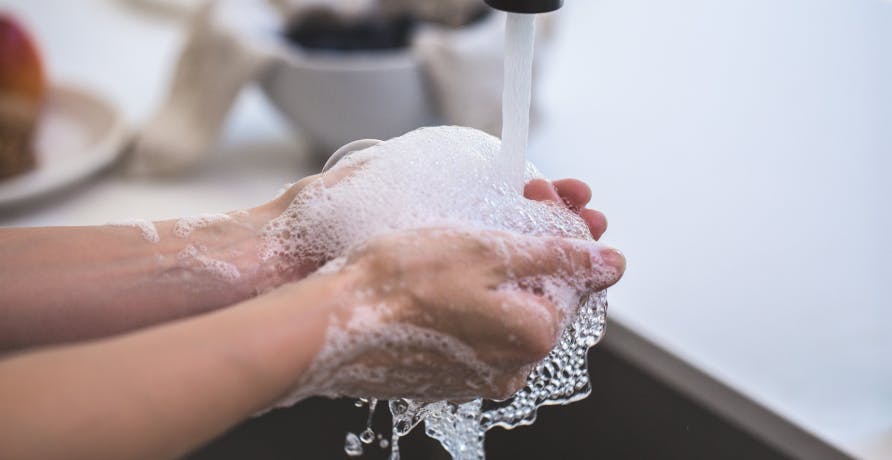
How Much Water Waste do Americans Create and Why?
Americans are known to go big or go home, but when it comes to the amount of water waste created by the average American – they don’t skimp on either. According to the EPA, the average American family wastes up to 180 gallons of water each week, which totals to 9,400 gallons of water waste each year – which is the same amount of water that can be used to fill over 150,000 eight ounce cans of soda.
There are several culprits behind the excessive use of water and water waste created by Americans.
Water Leaks
For instance, many Americans remain unaware that the amount of water waste they contribute to on an annual basis are due to unforeseen and unnoticed water leaks: which could take place in their washing machines, dishwashers, or even toilets – and create an exorbitant amount of water waste. In fact, water waste from household leaks can account for nearly 900 billion gallons of water across the country – and this amount of water waste could provide a sufficient amount of water for over 10 million homes in the United States.
Household Appliances
Another reason behind the alarming amount of water waste created by Americans is because they tend to run the dishwasher or laundry machine even when it isn’t entirely full. This prevents Americans from being energy efficient, and ultimately results in more water waste. If Americans aimed to only run an appliance like the dishwasher when it is entirely full, it would help to save over 300 gallons of water each year.
Most Americans are guilty of leaving their water running for too long when doing simple things like brushing their teeth, shaving, or even washing the dishes. This is another reason why the U.S. is subject to so much water waste, as almost 6,000 gallons of water could be saved every year if Americans shut the faucet off while doing these daily activities.
The drop down sections below will reveal the various appliances Americans often leave running for too long:
Water Usage: Europeans vs. Americans
In comparison to most European countries, where most live in small apartments without an outdoor space – the majority of Americans have large lawns that require watering, too. However, this is another area where water waste is often created – with anywhere from 30% to 60% water usage being allocated to keeping outdoor areas from going dry. Even more so, much of the water waste created from trying to maintain outdoor lawns gets evaporated, blown away, or runs off into sewer systems due to poor irrigation systems. In the end, outdoor lawns can account for almost 25,000 gallons of water waste each year.
The battle cards below will break down the differences between how Americans and Europeans use water:
It’s clear that the U.S. is subject to excessive water waste each year, but is it the same in other countries?
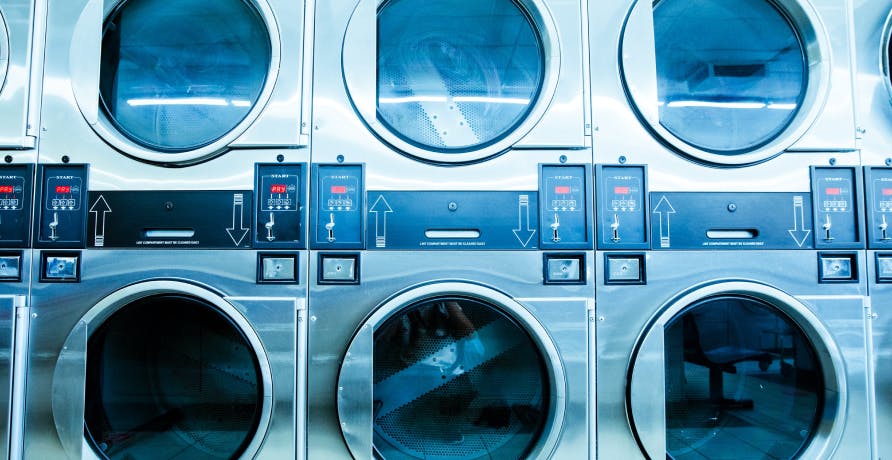
How Much Water Waste Is Created: U.S. vs. Other Countries?
The United States is suffering from water waste, but the good news is that the U.S. isn’t in the same peril as other countries are with water waste – given a whopping 80% of the diseases in developing countries are due to contaminated water. By 2025, one third of developing countries will suffer from a water shortage – meaning countries like the U.S. should realize the amount of water they are wasting is enough to supply these developing countries with clean water.
How Much Water Does the Average American Use?
The average single American uses around 100 gallons of water per day, where the average American family uses around 300 gallons of water every day. One of the reasons why Americans and those in the U.S. are able to contribute to so much water waste in comparison to other countries is because of the abundant water supply the U.S. has – as the country has 7% of the world’s freshwater supply.
Other countries in the world do not even have access to this amount of water, with countries in Africa such as Mozambique using as little as 3 gallons (or 11.1 liters) of water per day – because there is no other choice.
The table below will compare and contrast water usage in other countries in comparison to the United States:
| Country/Region | Domestic water use (L/person/day) | Context / Source |
|---|---|---|
| United States 🇺🇸 | ~310 L/p/d (~82 gal) | EPA WaterSense — “82 gallons/day at home” |
| Germany 🇩🇪 | ~127 L/p/d | Umweltbundesamt (UBA) — household water use |
| United Kingdom (England & Wales) 🇬🇧 | ~149 L/p/d | Cladco — HUK Household Water Usage |
| France 🇫🇷 | ~148–150 L/p/d | Ministère de la Transition écologique — water stats |
| Australia 🇦🇺 | ~180 L/p/d (varies by city/restrictions) | Bureau of Meteorology — National Performance Report (urban water) |
| Japan 🇯🇵 | ~260 L/p/d | Statista — Water industry in Japan |
| South Africa 🇿🇦 | ~175–220 L/p/d (target vs. observed) | Dept. Water & Sanitation — No Drop campaign & policy targets |
How to read: Figures reflect domestic/household use only (excluding agriculture or industry). Variations arise from seasonal differences and metering accuracy.
Therefore, much of the water waste created in the U.S. is due to the mindset of having a readily available supply of water at all times. The ability to create as much water waste would not be possible if the U.S. did not have the access to as much clean water as it does.
The interactive flip cards below (move cursor over card to flip) will reveal some of the cultural elements that make Americans more prone to using excess water:
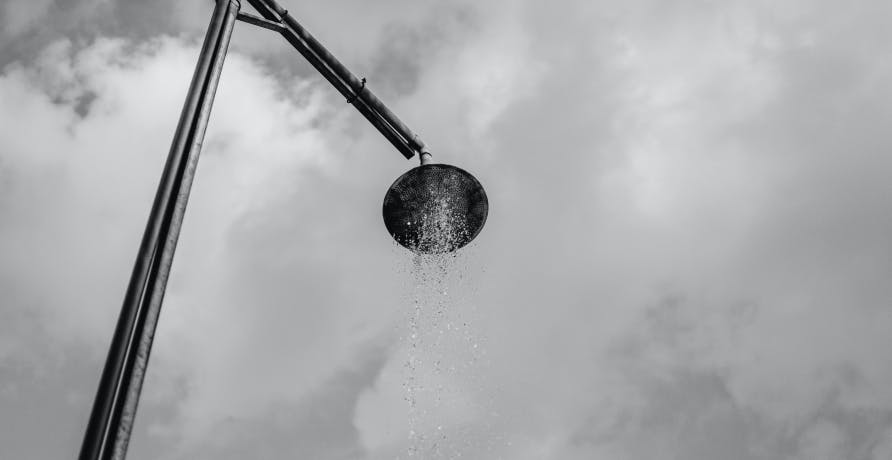
Impact of Water Waste on Americans
Americans are indeed currently suffering from water waste, and not only from the direct impact of water waste being an issue itself, but due to how water waste impacts other water usage concerns across the country – with the best example being the current predicament with the Great Salt Lake.
Impact on Water Resources Great Salt Lake
This is because the Great Salt Lake serves as a large source of water for seven states that border the Great Salt Lake, and with climate change already drying up other pivotal sources of freshwater such as this one, it makes the consequences of reduced water availability even more prevalent.
There would be a multitude of benefits to preventing further water waste, such as helping to avoid water shortages in businesses, helping states such as those that rely on the Great Salt Lake to better ration their current source of water, and relieving stress upon those unable to afford their current water bills. In fact, water waste in the U.S. is so high – that 80% of water managers across the country expected to continue suffering from water shortages due to water waste.
Impact on Utility Bills
As of 2015, the average American uses up to 82 gallons of water every day from being at home – that’s enough to fill up over 1,300 eight ounce soda cans or bottles of water. In addition to this alarming statistic, the amount of money Americans spend on water every year is also concerning – with the average American family spending over $1,000 annually on water.
Ultimately, this doesn’t need to be the case, as Americans can find easy ways to both reduce their contribution to water waste and also lower their water bills at the same time.
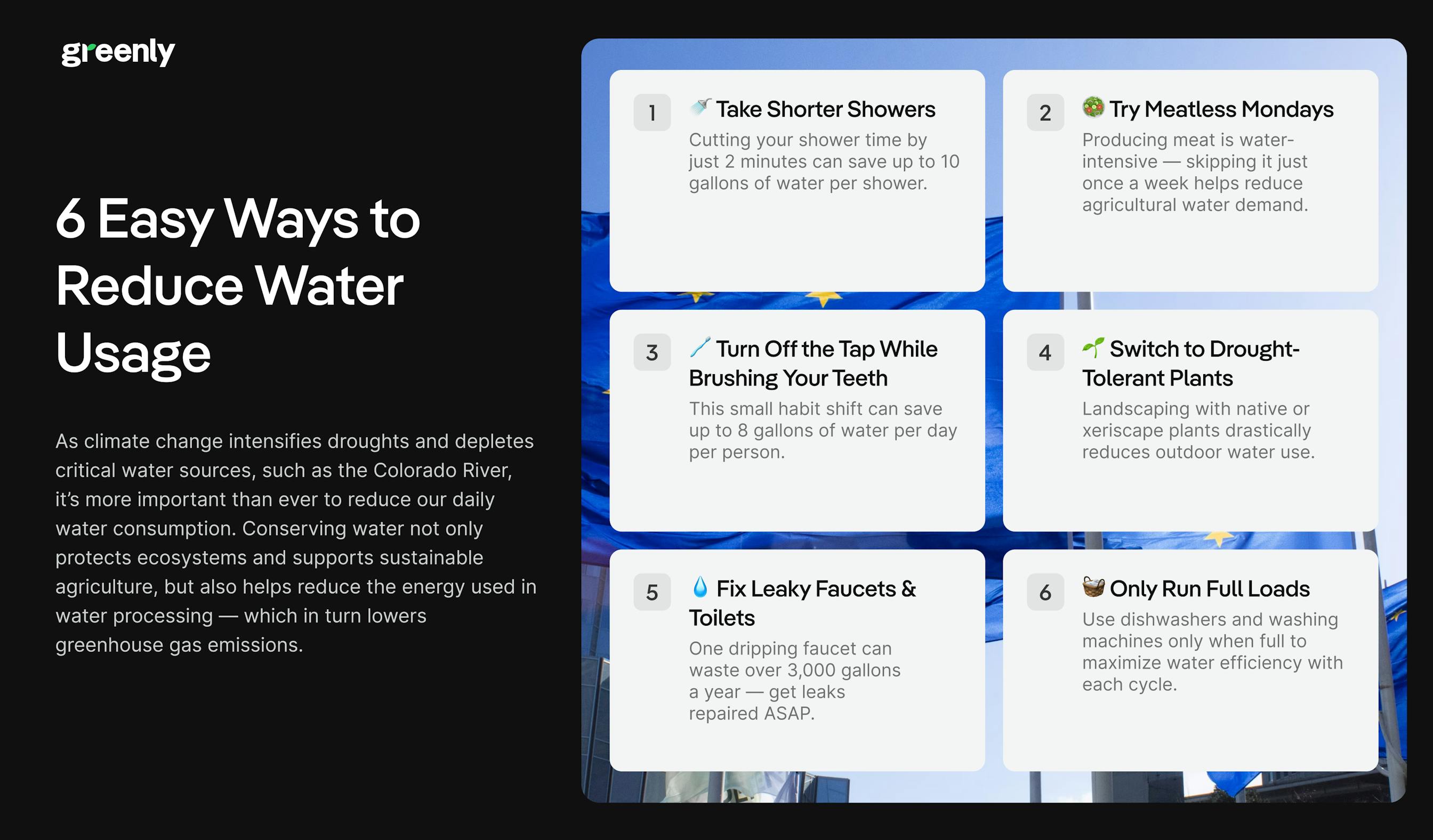

If Americans made a stronger effort to reduce their water consumption and prevent water waste, it would help the environment, local communities, and promote the value of sustainability and conserving natural resources in the midst of climate change – where finite resources are becoming increasingly scarce and lacking in abundance.

How Americans Can Conserve Water
Water waste may be high in the United States, but that doesn’t mean that Americans and businesses across the U.S. can’t make an effort to reduce the amount of water waste being created.
In fact, there are lots of ways that we can all make an effort to fight against water usage and climate change – check out our Leaf Media podcast below for why climate activism is more imperative than ever before.
Ways for Americans to Reduce Water Usage
First off, one of the best ways that Americans can seek to conserve water is by checking that all of the appliances in their households or businesses aren’t subject to water leakage. If businesses and homes across the country made an effort to check for leaks on a regular basis in addition to making the switch to energy efficient appliances like washing machines and dishwashers – it can help to not only save money with reduced water utility bills, but to also cut back on water waste.
As mentioned and explained before, most Americans are guilty of leaving the water running for too long – especially when trying to change the temperature of the water when washing dishes. One solution to this, despite the fact that it isn’t great for avoiding the use of plastic water bottles, is to keep a bottle of cold water in the fridge at all times – so when someone wants to use cold water, they prevent the need to leave the faucet on for too long to change the temperature of the water.
The overview cards will reveal the different ways Americans could work to reduce their water usage and avoid water waste:
Shorter Showers
Cut shower time by just a few minutes to save gallons of water daily.
Turn Off the Tap
Switch off faucets while brushing teeth or washing hands to avoid unnecessary waste.
Efficient Dishwashing
Run the dishwasher only when it’s full, or wash dishes in a filled basin instead of under running water.
Smart Lawn Care
Water lawns early in the morning, switch to drought-resistant plants, and reduce sprinkler use.
Full Laundry Loads
Wash only full loads of laundry and use cold water cycles to cut down water and energy use.
Fix Leaks
Repair dripping faucets, toilets, and pipes quickly — small leaks can waste thousands of gallons yearly.
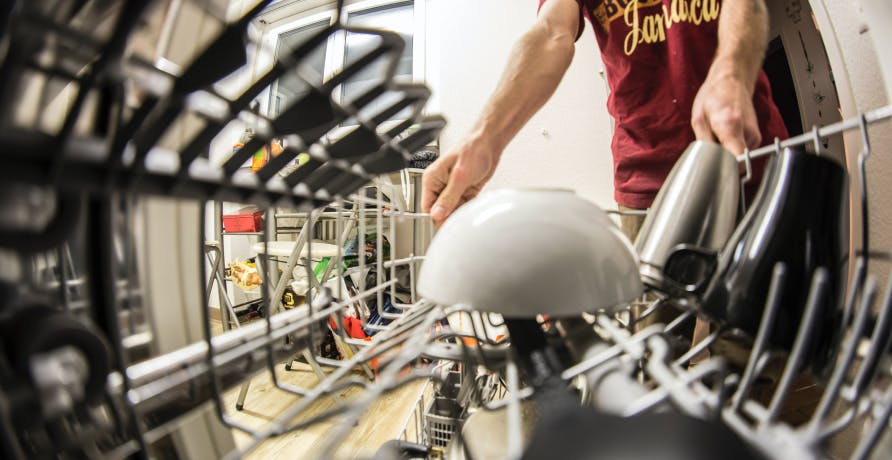
Another answer to preventing water waste is by simply turning off the shower when shampooing or shaving, as there’s no need to let the water run while doing these activities. In addition, leaving the faucet running while doing the dishes will create water waste too – and it is actually more productive to wash dishes in a sink full of water than to leave the faucet running.
Overall, water waste is prevalent across the world, especially in the United States – but while the figures are alarming, there are plenty of ways to reduce water usage and prevent more water waste.
FAQs on Water Waste & Greenly
Why do Americans use so much water?
What is the problem with water waste?
How can Greenly help?
What About Greenly?
If reading this article about water waste in the U.S. has made you interested in reducing your carbon emissions to further fight against climate change – Greenly can help you!
Figuring out where water is being wasted the most can be tricky – but Greenly’s got you covered. Click here to book a demo and learn more about how we can help you to measure and reduce your emissions and become a more sustainable company.
Greenly can help you make an environmental change for the better, starting with a carbon footprint assessment to know how much carbon emissions your company produces.
